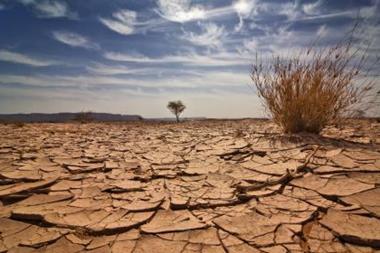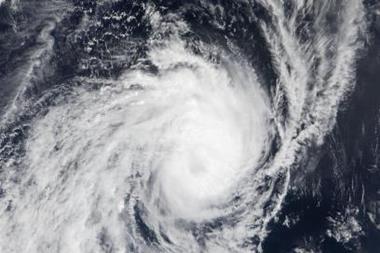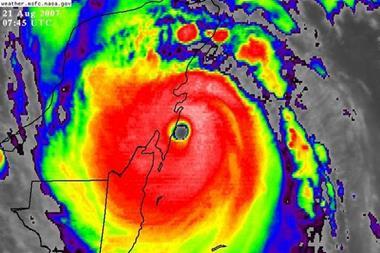By Professor Bill McGuire of Benfield – UCL Hazard Research Centre
Two huge catastrophes dominate the period: Cyclone Nargis, which made landfall in Burma (Myanmar) in late April – early May, and the major earthquake that struck China’s Sichuan province less than two weeks later. Together, the two events resulted in at least 210,000, deaths, but the actual figure is likely to be far higher.
Elsewhere, two moderate earthquakes caused some damage and took three lives in Greece. While the Atlantic hurricane season got off to a quiet start, tropical storms Alma, Arthur and Bertha have caused some damage in Central America, the eastern United States and Bermuda, and taken lives. In the Pacific, landslides and floods due to Typhoons Fengshen and Halong have caused fatalities and damage in the Philippines, while flooding caused by Tropical Cyclone Jokwe exacerbated the already difficult situation in southern Africa.
The extremely active tornado season in the US mid-west continued into May and June, with an EF5 tornado causing major damage in the city of Parkersburg, Iowa, and total losses for the 2008 season so far estimated at $9.25 billion (economic) of which $8.15 billion is insured (Munich Re). The United States also experienced its worst floods since 1993, with breaches in the levees of the Mississippi, Cedar, Iowa and other rivers leading to massive flooding of farmland, especially in Iowa, where parts of Cedar Falls and Des Moines were also inundated. Loss estimates of the US flooding are currently put by Munich Re at up to $10 billion (economic), of which up to $1 billion could be insured.
Territory: United States
Region: Illinois, Indiana, Iowa, Michigan, Minnesota, Missouri, and Wisconsin.
Date: June – early July 2008
Event: Floods
Impact: The floods and associated storms claimed the lives of 24 people and led to the evacuation of nearly 40,000 people. Iowa was worst affected, in particular Cedar Rapids and Iowa City, with flooding occurring here on the Mississippi, Cedar and Iowa rivers, in many cases arising from the failure of levees, including a 15m break in a levee of the Des Moines River at Des Moines. Eighty-three out of 99 counties in the state were declared disaster areas, with the state governor estimating that 340 towns had been affected either by the floods, or by tornadoes, leading to losses of “tens of billions of dollars”. Damage to property and infrastructure was far less than in 1993 due to the relatively sparse population densities in the affected areas. Most damage occurred in Cedar Rapids, where 4,000 properties were flooded, causing damage estimated at $736 million. The impact on agriculture, however, was particularly severe, with 5 million acres of corn and soyabeans lost to the floods, resulting in record prices. Total crop losses are estimated at $8 billion (American Farm Bureau), including losses of $4 billion in Iowa alone. Navigation along the Mississippi River was affected by the closure of several locks and dams. Munich Re estimates economic losses of up to $10 billion, of which up to $1 billion is insured.
Summary: The US mid-west has succumbed to a second 500 year flood event in the course of just 15 years, the last being in 1993. In total, at least 36 levees and other flood barriers failed or were overtopped along the Mississippi waterway, with others giving way on the Iowa, Cedar and other rivers. On 30 June, the level of the Mississippi peaked in St. Louis, Missouri at 11.9m, 3.35m below the record set in 1993. Following a wet winter and spring, a series of successive storms dumped large amounts of rainfall over the mid-west in the first half of June. Both precipitation levels and river levels breached historical records across many parts of the region, and 1,100 daily precipitation records were broken, including a 1 in 1000 year daily value of more than 272mm in Indiana.
Data sources: United States Geological Survey
www.usgs.gov
Federal Reserve Bank of Chicago
http://midwest.chicagofedblogs.org
Additional sources: National Oceanographic & Atmospheric Administration
www.ncdc.noaa.gov
Territory: China
Region: Sichuan province
Date: 12 May 2008
Event: Earthquake
Impact: The most destructive and lethal earthquake in China since Tangshan in 1976 affected over 45 million people in 10 provinces, and resulted in the evacuation of 15 million. As of 8 July, the official death toll was put at 69,197, with 374,176 injured and over 18,000 still missing. Around 4.8 million people are confirmed homeless, but this figure may be as high as 11 million. An estimated 5.36 million buildings collapsed and more than 21 million buildings were damaged; mostly in Sichuan province, but also in parts of Chongqing, Gansu, Hubei, Shaanxi and Yunnan. More than 7,000 school classrooms collapsed leading to massive casualties among the young. Landslides took more than 700 lives at Qingchuan and dammed rivers resulting in 34 ‘quake lakes’ that at one point threatened nearly three-quarters of a million people. Upwards of 2,470 dams were damaged, along with over 50,000km of roads and 47,000km of potable water pipes. Total economic losses are estimated at $86 billion. Total property damage estimates vary: $20 billion (Munich Re) and $10-15 billion (RMS). Insured losses will be substantially less, perhaps $1 billion (AIR) but this will still be the largest insured loss to date for a natural disaster in China.
Summary: A Magnitude 7.9 (Moment Magnitude) earthquake struck the Chinese province of Sichuan at 14.28 local time on 12th May. The epicentre of the quake was 80km WNW of the provincial capital, Chengdu, and the focus at a depth of just 19km. Shaking intensities on the Modified Mercalli Scale are estimated at XI in Wenchuan County, VIII at Deyang and Mianyang, VII at Chendu and VI at Luzhou and Xi’e. Shaking was also felt across much of central, eastern and southern China, including Beijing (1500km) and Shanghai (1700km), and also as far afield as Bangladesh, Taiwan, Thailand and Vietnam. The quake occurred on the NW margin of the Sichuan Basin, either on the Longmenshan Fault, or one related to it. The quake may have involved up to 9m of displacement along a 240km long rupture. Strain accumulation in the area arises due to the eastward displacement of the crust in response to the northward movement of the Indian Plate into the Tibetan Plateau. In 1933, a similarly sized earthquake in the area resulted in more than 9,000 deaths.
Data sources: United States Geological Survey
http://earthquake.usgs.gov
ReliefWeb
www.reliefweb.int
Additional sources:
Insurance journal
www.insurancejournal.com
China Earthquake Geospatial Research Portal
http://gist.fas.harvard.edu
Territory: Greece
Region: Western Peloponnese
Date: 8 June 2008
Event: Earthquake
Impact: The earthquake was the first fatal seismic event in Greece since the Athens earthquake of 1999, and resulted in two deaths, and up to 250 injured. Over 1,000 buildings were reported damaged or destroyed, mostly in the towns of Achaia and Ileia, close to the epicentre, with 2,000 people made homeless. No loss figures are yet available. Coincidentally, a second unconnected, but similarly sized, earthquake, affected the Greek island of Rhodes on 15 July, taking a further life.
Summary: A Magnitude 6.3 earthquake struck the Western Peloponnese at 03.25 local time; 16km beneath the surface and 35km SSW of the port city of Patras. Shaking intensity on the Modified Mercalli Scale was VIII at Kato Achaia, VII at Patras and Rion, VI at Agrinion, V at Corinth and Tripoli, and IV at Athens, nearly 200km to the east. As well as being felt across most of Greece, shaking was also experienced as far afield as Tirana in Albania and Cosenza, Italy. The earthquake occurred as a result of strain accumulation due to the relative motion of the major Eurasian Plate and the much smaller Aegean Sea Plate. Strain seems to have been released, on this occasion, by movement along a strike-slip fault. Larger earthquakes are possible, and events up to Magnitude 7.2 have occurred in central Greece.
Data sources: United States Geological Survey
http://earthquake.usgs.gov
Additional sources:
Wikipedia
http://en.wikipedia.org/wiki/2008_Peloponnese_earthquake
Territory: United States
Region: California
Date: Mid-June to July 2008
Event: Wildfires
Impact: By 11 July, the fires had burned 801,726 acres, far exceeding the estimated 500,000 acres burned in the state during 2007, and the 800,000 acres burned in 2003, making these fires the biggest in state history by affected area. Major fires affected the Big Sur and Santa Barbara areas. As of 25 July, the fires had burned nearly 4,000 km2 and destroyed 122 homes. On 24 July, 33 fires were still burning and continue to pose a threat to inhabited areas that host 14,000 homes and more than 3,000 other structures. As of late July, loss figures were not available, although the cost of the fire-fighting itself is estimated at $320 million.
Summary: Severe and extensive lightning (more than 6,000 strikes) from dry thunder storms triggered a series of major wildfires (the Northern California lightning series) in forest and chaparral across the north of the state, with more than 1,700 independent fires burning simultaneously at the height of the outbreak, and over 2,000 fires reported in total. Contributing factors included two years of below average precipitation, with spring 2008 being the driest on record for many areas. In northern California, the brush was as dry in June as is normally the case in October.
Data sources: Insurance Journal
www.insurancejournal.com/news/
Wikipedia
http://en.wikipedia.org/wiki/2008_California_wildfires
Additional sources: Reuters
http://uk.reuters.com
California Governor’s Office of Emergency services
www.oes.ca.gov
Territory: Burma (Myanmar); Sri Lanka, India, Bangladesh
Region: Yangon, Ayeyarwady, Bago, Mon, Kayin (Burma); Ratnapura, Kegalle (Sri Lanka)
Date: 28 April - 2 May 2008
Event: Tropical Cyclone
Impact: Cyclone Nargis resulted in the greatest recorded natural disaster in Burma’s history. The official death toll by July 2008 was 140,000, but reports of as many as 80,000 killed in a single town (Labutta) suggest that the true toll could be far higher. Other death toll estimates range upwards from 300,000 to 1 million. The UN reports that 1.5 million people were affected by the storm, but foreign aid workers estimate that 2 – 3 million could have been made homeless. An estimated 450,000 buildings were destroyed, including over 75% of all buildings in Ayeyarwady province, and around one-third of a million damaged. The latest estimate of economic losses at the end of July was around $4 billion.
Summary: Cyclone Nargis developed from a deep tropical depression off the east coast of India. On 27 April, the storm achieved tropical cyclone status as it tracked NNW towards India. The following day it strengthened to become Cyclone Nargus and continued to head westwards. By the 29th, wind speeds of 160kmh led to Nargis being reclassified as a very severe cyclonic storm. Following a period of temporary weakening, Nargis turned to the east on 1 May and began to intensify rapidly. By 2 May, peak wind speeds of 215km h were recorded, as Nargis struck the Burma coastline as a Category 4 (Saffir-Simpson Scale) storm. Landfall occurred in the province of Ayeyarwady causing destruction and loss of life on a massive scale. Nargis weakened over the following 24 hours and dissipated over the Burma-Thailand border.
Data sources: ReliefWeb
www.reliefweb.int
NASA Earth Observaotory
http://earthobservatory.nasa.gov
Additional sources: Reuters
www.reuters.com/news/globalcoverage/myanmar
Territory: United States
Region: Mainly Central & southern United States, including Alabama, Arkansas, Florida, Georgia, Illinois, Indiana, Iowa, Kentucky, Louisianna, Mississippi, Missouri, Nebraska, Ohio, Oklahoma, South Carolina, Tennessee, Texas, Wisconsin,
Date: First half 2008
Event: Severe thunder storms and tornadoes
Impact: With 124 fatalities, the season so far is the most lethal for a decade. Worst affected in the period March to July was Parkersburg in Iowa, which was struck by the season’s only EF5 event. Seven fatalities resulted, 222 homes were destroyed and a further 400 damaged. In addition, 21 commercial buildings, four factories and a high school were also badly damaged or destroyed. During the 7 – 15 May outbreak, 26 lives were lost in Oklahoma and Missouri, and a further six across Illinois, Iowa, Kansas and Nebraska in early June. PCS puts the February insured losses alone at $1.19 billion.
Summary: The first half of 2008 resulted in exceptionally severe thunder storm and tornado activity across much of the United States. As of 26 July, 1,771 tornadoes had been recorded in the United States, of which at least 936 were confirmed. The first major tornado outbreak occurred in January, which is extraordinarily early for significant tornado activity, with peak activity occurring in May and June. May was one of the most active months on record, with three major outbreaks, all of which took lives. Early June saw another major outbreak, after which activity died back to normal levels. The largest outbreaks were 7 – 10 Jan (72 tornadoes), 5 – 6 Feb (87), 8 – 11 April (58), 1 – 2 May (50), 7 – 15 May (112), 22 – 30 May (87) and 3 – 13 (125). The 22 – 30 May sequence included an EF5 tornado on the Enhanced Fujita Scale and together, nine EF4 events were recorded in the period from January to late July.
Data sources: National Oceanographic & Atmospheric Administration (NOAA)
www.ncdc.noaa.gov



















No comments yet